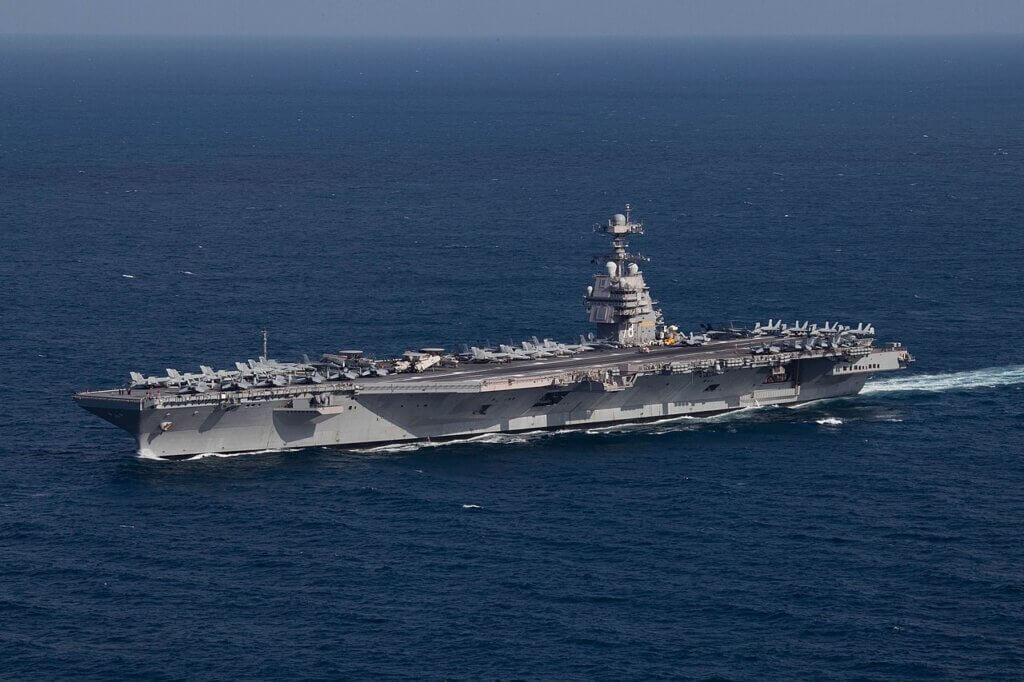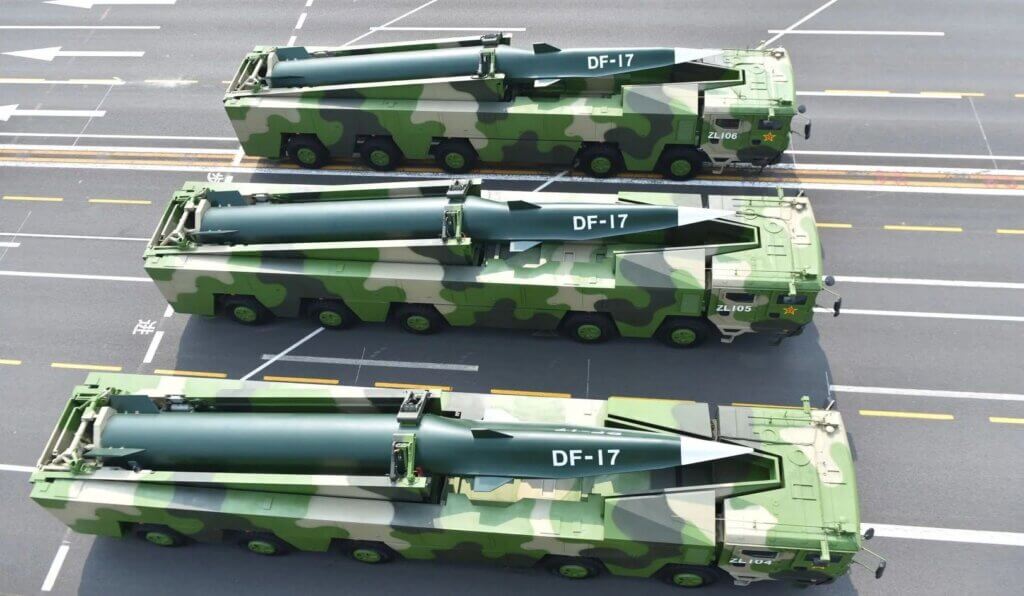China’s Hypersonic Missile Downs US Navy Aircraft Carrier in New Simulation. In a recent series of simulated war games carried out by Chinese military strategists, there are concerning indications that even the United States’ most formidable aircraft carrier group, previously deemed resistant to conventional weaponry, could be incapacitated by a limited number of precisely executed hypersonic strikes.
This revelation, divulged in an infrequently disclosed report, revolves around the Gerald R. Ford aircraft carrier and its associated fleet. The assertion made is that by deploying hypersonic weapons with precision, there exists a high likelihood of neutralizing the carrier and its accompanying assets. This information is reported by SCMP.
The insights from these war game simulations, which primarily focus on the deployment of hypersonic strikes against a US carrier group, have been publicly unveiled for the first time through a paper published in the Chinese-language Journal of Test and Measurement Technology in May.
In a sequence of over 20 intense virtual battles, enacted on a widely used military simulation software employed by the Chinese military, the outcome shows that the USS Gerald R. Ford carrier group was effectively incapacitated by a barrage of 24 hypersonic anti-ship missiles.

The simulated scenario involves US vessels repeatedly advancing toward a disputed island in the South China Sea, a region claimed by China, despite receiving multiple cautionary alerts.
The simulation’s results unveiled that nearly all the US surface vessels were severely impaired and eventually sunk due to the assault. This was achieved using two models of hypersonic anti-ship missiles, some originating from remote locales like the Gobi Desert.
The report emphasizes that the Chinese military’s mastery was highlighted by their intricate launch strategy, involving a sophisticated three-stage attack that outsmarted the robust defense systems of the US carrier group.
The US fleet featured in this simulation consisted of six carefully selected surface ships, renowned for their cutting-edge technology and unmatched potency. The flagship, the CVN-78 Gerald R. Ford, was accompanied by the CG56 Ticonderoga-class cruiser San Jacinto and four DDG-103 Arleigh Burke-class Flight IIA guided missile destroyers.
Noteworthy is the fact that the Ford-class carrier, commissioned in 2017, boasts advanced attributes such as an electromagnetic launch system, advanced radar, and electronic warfare systems. The cruisers and destroyers within the carrier group were similarly armed with advanced weaponry and protective measures, including radar systems with the ability to simultaneously detect and track multiple targets. Their air-defense missile arsenal comprised 264 missiles, including the RIM-161E SM-3, designed to intercept ballistic missiles.
The simulation adhered to the principle of being “lenient with the enemy and strict with oneself,” introducing certain limitations on the Chinese side, such as restricted access to spy satellites and a finite supply of hypersonic missiles. This approach aimed to offer a realistic evaluation.
The two models of Chinese anti-ship missiles used in the simulation exhibited remarkable capabilities, capable of soaring at high altitudes and reaching an astonishing top speed of Mach 11. Both models demonstrated the ability to sink a carrier or large warship with only two successful hits.

The research paper disclosed that one model could operate within a range of 2,000 kilometers (1,240 miles) with an 80 percent success rate. In contrast, the other Chinese model had double the range and a higher success rate of 90 percent.
While the exact nomenclature of the hypersonic missiles deployed in the simulation remains undisclosed, the report concentrated on elucidating the performance characteristics of the two Chinese models used.
The Chinese People’s Liberation Army (PLA) detected the US carrier group’s movements during the simulation through its sea-based surveillance network. This led to the launch of eight less-reliable hypersonic missiles from southern and central China, while some were intercepted, these attacks depleted the US fleet’s SM-3 munitions. Following this, the PLA deployed eight more precise hypersonic missiles from northern and western China, targeting the carrier, destroyers, and cruiser.
In the aftermath of the attack, four US ships survived, primarily the destroyers due to their more agile defense systems. The utilization of electronic warfare systems interfered with enemy radar, and countermeasures like chaff and flare dispensers confounded incoming missiles.
Subsequent to confirming the status and positions of the remaining targets, the Chinese military initiated a final “mop-up” operation using six less accurate hypersonic missiles.
After running the simulation multiple times, the three-wave assault resulted in an average incapacitation of 5.6 out of six surface vessels, effectively eliminating the carrier group. Strategic tactics and target prioritization were emphasized to optimize efficacy and conserve ammunition.
However, it’s important to remember that while war game simulations provide valuable insights, they can’t replace real-world testing and evaluation.
Given this, the motives behind China’s decision to release the results of these war games remain undisclosed. Additionally, it’s impossible to independently verify the data used in these simulations. If the data regarding Chinese hypersonic missiles utilized in the simulation significantly deviates from reality, it could compromise the simulation’s accuracy and lead to misleading conclusions. Nonetheless, this simulated scenario, focusing on the South China Sea region, underscores the potential for heightened tensions between Chinese and US naval forces in the area, which has already witnessed escalating confrontations between the two powers.





